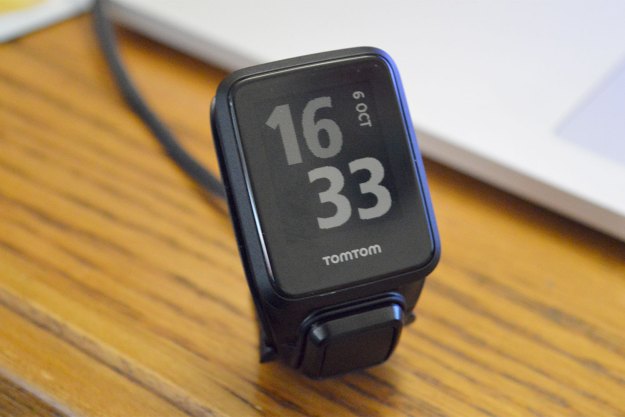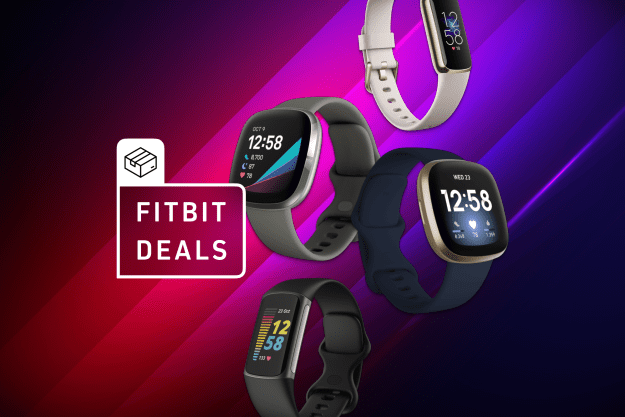
“With GPS, the ability to play music, and excellent accuracy, you can’t do much better at this price.”
- Very comprehensive tracking
- Heart monitor is quite accurate
- Music playback is nice
- Very easy to use
- Route exploration is a nice addition
- Not very stylish
- Lots of pairing and syncing issues
Fitness trackers aren’t exactly uncommon these days. Not only are there dozens of them on the market, but there’s little to set many of them apart. Even the ones that are unique are often riddled with issues like inaccurate heart rate tracking.
TomTom, however, hopes to change that. The company has come out with the Spark 3, the third iteration in the much-loved and highly reviewed Spark fitness tracker line. But does the Spark 3 live up to the Spark name? We took the device for a spin (and a run…and a swim) to find out.
It’s important to note that the Spark 3 comes in a range of different models with different features. We’re testing out the Spark 3 Cardio + Music version of the device.
Built for sport
The Spark 3 is quite obviously built with the sportsperson in mind – it’s not something you would wear with a suit and tie, or even necessarily to work. While it’s technically a member of the “sports watch” category, there’s a heavy emphasis on sports here.
Unlike some other sports watches, the main body of the device separates from the band, which is something you’ll have to do in order to charge it. That’s not to say that it can slide in and come out easily – it never felt like the body was going to fall out at random times, and to take it out, you’ll need to press reasonably hard.
The Spark 3 is quite obviously built with the sportsperson in mind – it’s not something you would wear with a suit and tie, or even necessarily to work regularly.
When you first get the Spark 3, you’ll notice that it’s nowhere near as chunky as some other sports watches. The main body is 11.5mm thick, but it doesn’t feel that thick by any means, especially when it’s in the band and on your wrist. The body is fairly oddly shaped – it’s got a rectangular screen, but underneath that screen the body continues to protrude down, where you’ll find the physical buttons. There are four buttons, up and down, and left and right – all of which are located around what looks like it should be one main button. It’s not a main button at all; instead it’s just a piece of plastic that helps you find where the buttons are.
The Spark 3 certainly isn’t ugly, but a few changes would have been nice – for example, the unit as a whole might have looked a little smoother if it had a touchscreen and did away with the physical buttons altogether. It isn’t the most comfortable watch out there either, especially with the rubber band that we tested. Part of that has to do with the rubber and how it rubs against the skin, especially considering you have to strap it on snuggly in order for the heart rate monitor to work properly. The band also doesn’t really let much air in; it got really sweaty under there after only a moderate run. That’s partially why you may not want to wear this device all day everyday – instead it works best as a wear-it-while-you-workout kind of device.
Setup and the TomTom app: why so many apps?
Unfortunately, setting up the device isn’t the easiest process. You have to go to the TomTom website and download the app for your computer first, after which you’ll need to plug it in, then download the smartphone app (Android | iOS), set the app up for pairing, set the watch up for pairing, and then follow the on-screen instructions. The desktop app is a nice feature at times, but it certainly doesn’t make sense as a necessary part of the set-up process, and it would have been nice if you could simply set it up without using a computer at all.
Speaking of the smartphone app, it feels like there are a few things missing here. For example, you can only sync music to the watch using the desktop app, which is a bit of a pain. There were also problems getting the watch and the app to sync up. After first connecting the two, we assumed they would pair up relatively quickly once they were near each other. Instead, the app regularly got stuck in the pairing process and we were often told to restart Bluetooth on my phone – a process that rarely worked. Sometimes the two would sync up and information would transfer over automatically, but whenever we tried to sync them up on command, we would run into far too many issues.
How’s the tracking?
If you can get past the syncing and comfort issues, the tracking features really makes the Spark 3 shine. You’ll find seven different tracking modes on the device: run, cycle, swim, treadmill, gym, indoor, and freestyle. You’ll also get a stopwatch mode if you need to time yourself.
Once you enter a mode, you’ll be presented with all the information you need, like route information and heart rate. That can be convenient when you’re on a run and don’t want to pull out your phone or another device – simply take a quick glance at your watch and you’ll see what you need to know.
Another nice thing about the Spark 3 is the accuracy of the heart rate monitor. While other fitness trackers have had varying results when it comes to tracking heart rate, we had no issues with this one – in fact, on the contrary it managed to keep up pretty well.
A weak point on the Spark 3’s fitness tracking is the slight delay in initially picking up a GPS signal, and it may drop out a few times during your workout – perhaps once or twice in an hour. That’s not a deal breaker, but something to keep in mind nonetheless. Overall we found that the GPS was pretty accurate, even if it did drop out every now and again.
While other fitness trackers have had varying results when it comes to tracking heart rate, we had no issues with this one.
Setting up the device for a workout is extremely easy. Simply choose which type of workout you want, let it get itself ready with the GPS and heart rate monitor, and then hit “get going.” Once you finish your workout, long press the left button to end the workout and you’ll get quite a bit of information to review once the workout data syncs to the phone. After a run, for example, you’ll be able to see information like where you went on your run, how far you went, your average heart rate, your heart rate over time, and so on – all information that you can use to tweak your workouts and runs. After swimming, you’ll be able to see your distance, number of strokes per minute, speed, and more. It’s a lot of information and the TomTom app presents it in an easy-to-read manner.
One of the biggest things that the Spark 3 has over the Spark 2 is the new route exploration feature, which basically shows your run being mapped out as you go, and can help you find your way back to your starting point if you happen to get lost on your run – all of which uses the new built in compass. Not only that, but you can also add routes to the watch, which is a nice addition often reserved for more expensive fitness tracking devices. TomTom supports uploads of GPX files, which is the most common form of GPS data file, but you’ll need to do that through the desktop app.
Run to some tunes
One version of the device – the Spark 3 Cardio + Music – allows for music playback, and it comes with a Bluetooth headset for listening on the go, adding a whole new functionality to the watch. We had a few issues connecting the device to the headset, especially with other Bluetooth headphones around, but after a few tries they connected and started playing our tunes.
The device features 3GB of storage, and you’ll need to upload music in the form of playlists from iTunes. The desktop app is able to scan your computer for playlists, which is pretty convenient, but you’re stuck if you’re a Spotify user or tend to go for another streaming service. The advantage, however, is that you can run to music without needing to carry your smartphone around.
The headphones that come with the device are adequate, but audiophiles may want to use their preferred option. We did experience one of the earbuds falling out a lot during running, so if you’re serious about listening to music while you workout, it may be worth investing in some other workout earbuds.
Battery life
The Spark 3 is definitely equipped for both short workouts and marathons – TomTom says that you’ll get as much as 11 hours of battery life in tracking mode, which is around what we experienced. Of course, most people will get far more than that – few use the tracking mode for 11 consecutive hours per day, so if you work out for an hour a day, then you’ll get multiple days of use out of a single charge.
In general, your battery life will vary depending on how many sensors you keep on during use. For example, the heart rate sensor will take a toll on battery life, but if you keep the sensors mostly off, you’ll get a week or more of use.
Our Take
The TomTom Spark 3 is an excellent fitness tracking device, but it’s one that’s probably better suited to the workout junkie rather than the casual user who wants a smartwatch they can use to workout. This device doesn’t offer notifications from your phone, so if that’s something you’re looking for you may want to look elsewhere, such as a device from Garmin.
Still, if you are a fitness junkie, this is an excellent option. With GPS, the ability to play music, and excellent accuracy, you can’t do much better at this price. – the device ranges between $130 and $250 depending on the features you want. All models are waterproof up to 40m too, so this will be enough for any swimmer not using it for scuba diving.
Is there a better alternative?
Not at this price. The Spark is an excellent device for fitness purposes and those looking for a more comprehensive fitness tracking watch will have to move up to another pricing tier.
How long will it last?
Given its waterproofing and the fact that you’ll mostly use this while working out rather than on the day-to-day, this device should last at least a few years.
Should you buy it?
If you’re looking for a fitness watch to use while you’re working out, then this is the device for you. For a more comprehensive smartwatch, however, you may want to look elsewhere.
Editors' Recommendations
- Google Pixel Watch 3: news, rumored price, release date, and more
- The 4 best Whoop alternatives in 2024
- The future of Fitbit doesn’t look good
- Xiaomi’s newest wearables may make you want to ditch your Apple Watch
- You can finally take ECGs and track AFib on a Garmin smartwatch











